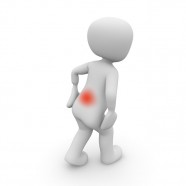
The lifetime mobility, provided by our joints is more often than not, taken for granted. Stop for a minute and think of how many repetitive motions the joints will go through in a lifetime. Would it not be nice to ease into our advanced years “smoothly?”
When we suffer from stiffness and joint pain, one starts to think in terms of aging. The supple, limber and pliable feelings of our youth may seem to be fading away. Note this is not a foregone conclusion of life. You may feel you have uncontrollable factors, but we have controllable factors as well.
Before we get into what a joint is composed of and nutrient specifics, I wish you know that from my personal health experience, raw vegetable juicing is what has kept me pliable and very limber. I have been utilizing this form of nutrition for most of my life. This form of nutrition is very high in organic sodium (not table salt related) the main element in our lymph system which feeds all of our connective tissue, joint material and more – not the blood. Therefore be mindful that when you want to restore an area of your body look to the most concentrated elements and what their function is. Other foods very high in organic sodium include whey powder, celery, beets, carrots and greens. Of course I am referring to their raw state!
It is now widely accepted and understood that certain elements or a lack of can affect a particular area of our body, affecting the quality of our life. Complaints of joint pain, bone degeneration and arthritis have become common place. I can state with full confidence through my own experience and studies done throughout the world, nutritional based products and natural foods, can make a difference. In conversing with many people over the years on health issues, a lack of knowledge was evident surrounding their condition and that of the products they were taking.
What is a Joint
The link between two bones is a joint. Joint material incorporates articular cartilage consisting of collagen, proteoglycans and chondrocytes), the shock absorber. Collagen is made of a strong fibrous protein found in connective tissue. Proteoglycans are protein chains embodying 95 percent polysaccharides and 5 percent protein, labeled GAGs (Glycosaminoglycans). These GAGs components are comprised of two sugar elements (Disaccharides), which contain glucosamine sulfate and amino sugars.
Chondrocytes include functions of maintaining and regenerating cartilage. Our joints are joined by a ligament which secretes synovial fluid. Synovial fluid lubricates and provides essential nutrition for the joint cartilage.
How are Joints Damaged
Joint damage has two chief causes being osteoporosis and/or rheumatoid arthritis. Joints may also acquire injury through overuse, an unfortunate movement, or from excessive weight. Other factors are involved such as aging, disease, trauma, caffeine, alcohol, poor calcium intake, excessive sugar and salt, soft drinks, drugs, protein, and smoking.
Nutrition Therapy and Profile
MSM (Methyl sulfonylmethane) MSM contains sulphur, an element commonly overlooked but every bit essential to life. MSM is an organic compound contained in most foods and is available in supplement form, “odor free “. Sulphur is found in every cell of our body, in particular our connective tissue which encapsulates the internal organs, joints, ligaments, tendons, skin, hair and nails. Sulphur is necessary for new cell growth, normal cellular function, provides heat, body structure and helps stimulate the brain and sexual system.
Stanley Jacob, M.D. and Robert Herschler at the Oregon Health Sciences Institute in Portland have conducted the most sulphur research. Stanley Jacob has been measuring the effects of MSM and DMSO (dimethyl sulfoxide) for over 40 years. Jacob and Herschler’s studies have provided us with most of today’s information on MSM. They found DMSO (MSM is the primary metabolite of DMSO), exhibits anti-inflammatory and pain reduction properties. Ongoing investigation through other scientists is taking place of the correlation between MSM and other aliments such as arthritis, asthma, allergies, Alzheimer’s disease, cancer, dermatological conditions and periodontal problems.
It is reported,” Herschler’s patent claims assert that MSM supplementation has benefited patient’s with a variety of symptoms including arthritis type conditions, calcium deposits, allergies, nasal conditions, some digestive disorders and constipation. (Note, however these claims are not peer-reviewed and published studies which should not imply these patients do not know how they fee.)
Sulphur Foods
Through food processing which removes sulphur from food and mineral depletion soil, our diets may be sulphur deficient. Typically, meat and dairy products were considered an important source, however in the case of vegetarians and lacto-vegetarians they may find it particularly difficult to obtain enough sulphur threw their diet, in light of low protein intake and deficient soil levels.
Foods high in sulphur: kale, horseradish, cabbage, cauliflower, watercress, chervil, broccoli, onions and brussel sprouts. Herbs high in sulphur: Eyebright, Mullein, Coltsfoot, Shepherd’s Purse, Fennel, Stinging Nettle, Meadowsweet, Watercress, Pimpernel and Plantain Leaves.
For optimal results with MSM, nutrients like Vitamin C, zinc, copper, and silicon should be available.
Studies show when amino acids and Vitamin C are present, the body transforms MSM to sulphur and further suggests a minimum concentration of MSM be conserved in the body to sustain normal function and structure.
Glucosamine
Glucosamine plays a particular role in our joint composition as outlined above. Because of its protective components, glucosamine sulfate is widely used by people who suffer from osteoarthritis. Safety reports have been favorable with exception of a few occasional minor stomach upsets. Glucosamine sulfate has demonstrated pain reduction and improved joint mobility in osteoarthritis patients. Exactly how this is achieved is not known. However studies suggest glucosamine may stimulate cartilage formation, provide anti-inflammatory effects, and/or stimulate production of hyaluronic acid found in synovial fluid. Science News reports a clinical review showing, “the injection of hyaluronic acid into osteoarthritis joints of patients suffering from low levels of synovial fluid relieves pain and improves mobility.” Glucosamine is necessary for the synthesis of hyaluronic acid, which is a primary constituent for lubricating and shock buffering properties of the synovial fluid.
Note; this fluid is decreased in people with osteoarthritis.
Glucosamine sulfate coupled with Chrondroitin sulfate, a related component are shown as a remedy for osteoarthritis from studies in Europe and Asia. The outcome of studies with glucosamine sulfate from China and Germany show symptom improvement from patients suffering with osteoarthritis of the knee. The groups received 1500 mg/day of glucosamine sulfate in three divided doses. Another report from the Medical College of Virginia in Richmond, 2000, found glucosamine to have positive effects in treating osteoarthritis of the knee.
The National Center for Complementary and Alternative Medicine, at the Nations Institutes of Health in Silver Springs, Md, announced its sponsorship of the first U.S. clinical trial, with an allotment of $ 6.6 million. The study will involve 1,124 patients examining the efficacy of glucosamine sulfate over a period of 16 weeks to reduce pain and improve function of the knee. Cramia Borek, PhD states, “If the results are as positive as the evidence amassed so far, it ought to firmly establish glucosamine in the mainstream of American health care and health care products.”
Eat For Joint and Bone Health
Eat more alkalizing foods: vegetables and most fruits are alkalizing guarding against calcium loss. Calcium levels increase to maintain our blood pH when acid levels rise primarily through acid forming foods. Acid forming foods are: protein, starches, and sugars, fat, dairy. Other culprits are coffee, alcohol, smoking, processed food, and some drugs.
Eat whole foods: green leafy vegetables, nuts, seeds, legumes, fish, root vegetables, sea plants, whole grains, and natural cultures of yogurt and fresh juices.
Antioxidants are beneficial in the form of Vitamin A, C, and E, alpha lipoic acid, grape seed extract, beta-carotene and coenzyme Q (10).
Enzymes that aid digestion, fight inflammation, promote healing, break down protein and are Proteases. Sources are: papaya, pineapple, figs, ginger root, and soy foods. Available in supplement form.
Essential fatty acids from salmon and tuna contain omega-3 EFA, shown to decrease inflammation and pain while at the same time, increasing joint flexibility. A favorite!
Bilberry, (herb), increases blood flow, supplementing needed nutrients to the joints.
Silicon is found in the herb Horsetail and oatmeal. Silicon strengthens our connective tissue. Also not too commonly known, aids the bones in the absorption of calcium. Silicon is found in the outer skins of nuts, seeds fruits and vegetables. Other sources are barely, oats, wheat bran and germ, sprouted seeds, rice polishings, alfalfa, dates, grains, kelp, greens, figs, apples, bananas, asparagus, beets, onions tomatoes and more.
Devil’s Claw, (herb-root) has gained a healing reputation since the studies conducted in 1958 at the University of Jena in Germany, showing Devil’s claw to have strong, anti-inflammatory properties. German studies have confirmed the ant-inflammatory and pain relieving potential of Devil’s claw compared to that of cortisone and phenylbutazone. (P.Belaiche1982).
Exercise in the form of a weight resistance program will produce the greatest benefits. Exercise signals the body to build new tissue, consequently, retaining calcium in the bones.
Caution: The differences of effectiveness reported may relate to the quality of the nutritional supplement used.
Copyright © 2017 – All Rights Reserved – Michelle Honda Ph.D.
Announcement
Look for my new forthcoming books “Reverse Heart Disease Naturally” (Jan.31, 2017) and “Reverse Inflammation Naturally” (May 31, 2017) and “Reverse Thyroid Diseases Naturally” (2018), “Reverse Dementia/Alzheimer’s Naturally” (2018)
Where to Purchase:
Reverse Gut Diseases Naturally
Reverse Heart Disease Naturally
Reverse Inflammation Naturally
Hatherleigh Press Page Buy Book RGDN
Local Book Stores in US and Canada
Disclaimer
While close attention was given to the accuracy of information in this article, the author accepts neither responsibility nor liability to any person with respect to injury, damage, loss or any circumstances involving alleged causes directly or indirectly related to the information in this article. The sole purpose is to educate and broaden ones awareness. This information is not meant to replace medical advice or services provided by a health care professional.





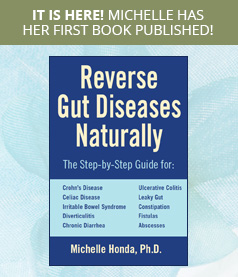

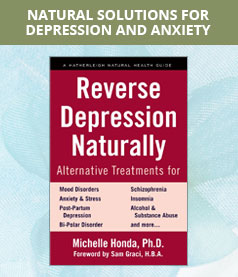
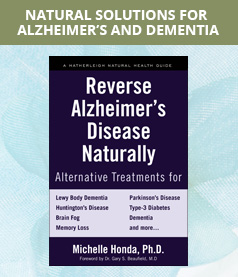
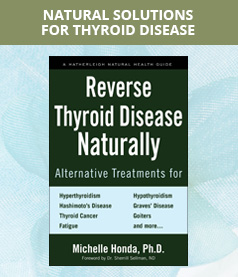

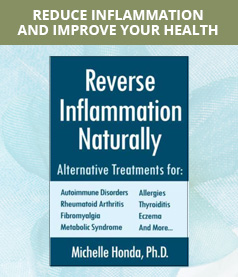
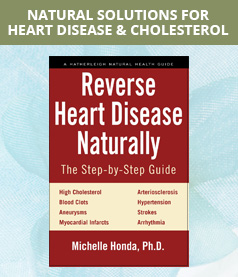
Follow Us!